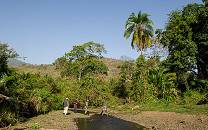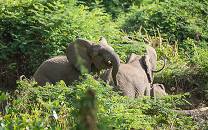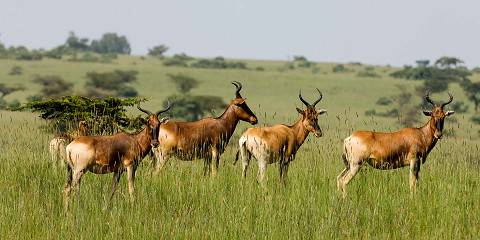Nature-lovers wishing to get off the beaten track should consider a visit to Chebera-Churchura National Park. The park is one of the last elephant strongholds in Ethiopia. There are no viable roads and you’ll go out with an armed ranger on foot. The elephant are shy and you’ll do well to get just a glimpse, but tracking these giants in the jungle is a thrilling experience.

-
Best Time To Go
- October to March (Little rainfall)
-
High Season
- October to January (The park is never busy)
-
Size
- 1,279km² / 493mi²
-
Altitude
-
596-2,071m /1,955-6,795ft
 View Photos
View Photos
 View Photos
+12
Photos
View Photos
+12
Photos
Pros & Cons
- Exciting, off-the-beaten-track destination
- A chance to see elephant and buffalo on foot
- Pristine wilderness
- Away from other tourist destinations
- Only one very bad road in the park
- Only very basic accommodation or camping without facilities
Wildlife
Chebera-Churchura National Park has a good variety of animals. The game rangers are skilled at tracking elephants and buffalos. Other wildlife you might spot while hiking includes lesser and greater kudu, defassa waterbuck, hippo, bushpig and giant forest hog. Guereza monkey are common in the , while vervet monkey offer lots of entertainment in the campsite.
Scenery
Due to the large span of altitudes, Chebera-Churchura NP covers a lot of different habitats and landscapes. There is a big chunk of lush jungle-like forest crisscrossed by streams and animal paths. Further afield the forest thins and gives way to . Several hot springs and crater lakes can be reached on hiking excursions.
Weather & Climate
The weather and climate of Chebera-Churchura NP is comparable to that of Ethiopia in general. More info:
Best Time To Visit
The best time to visit Chebera-Churchura is in the Dry season from November to February. The park is best explored on foot, so the Wet season months from April to October can be a bit more challenging. However, the scenery is at its best during this time.
How To Get to Chebera-Churchura NP
Chebera-Churchura is located about 450km/280mi southwest of Addis Ababa. The journey is usually taken over two days and can be broken up in Jimma.
Health & Safety
Please read our vaccinations and malaria page for Ethiopia, and our general wildlife viewing safety precautions page for more info:




